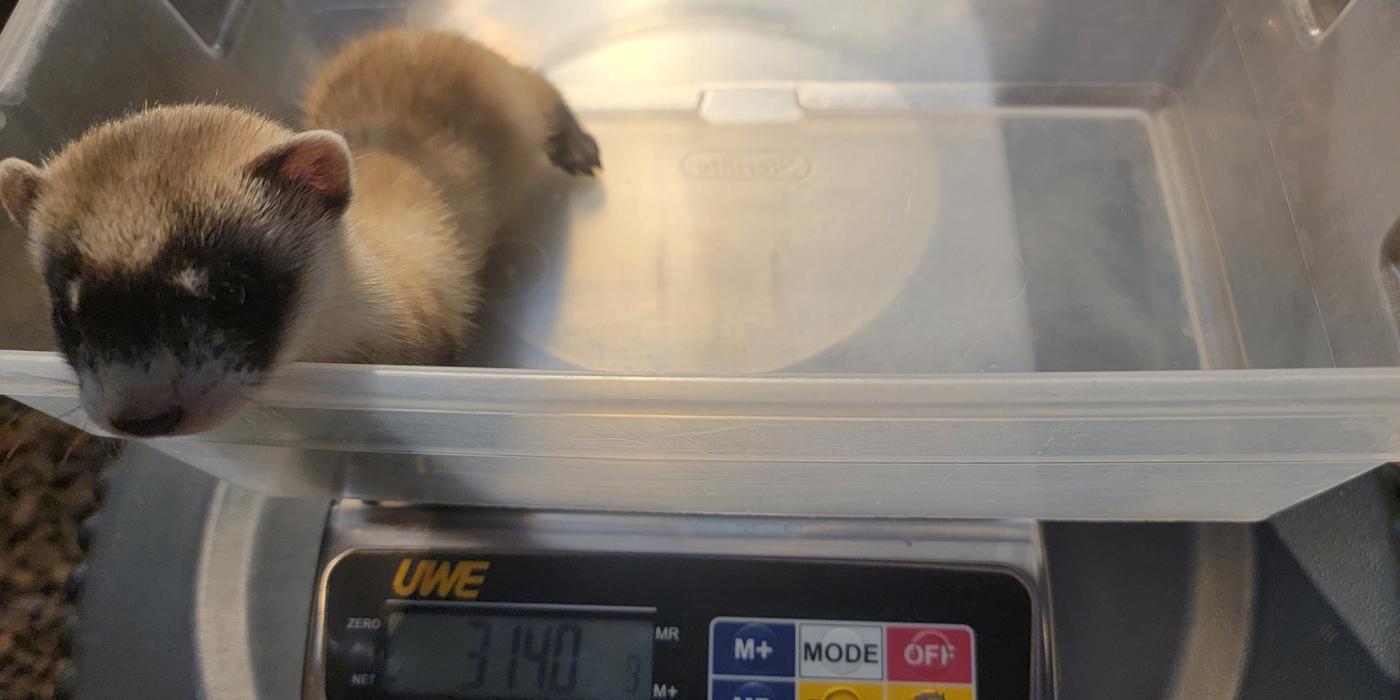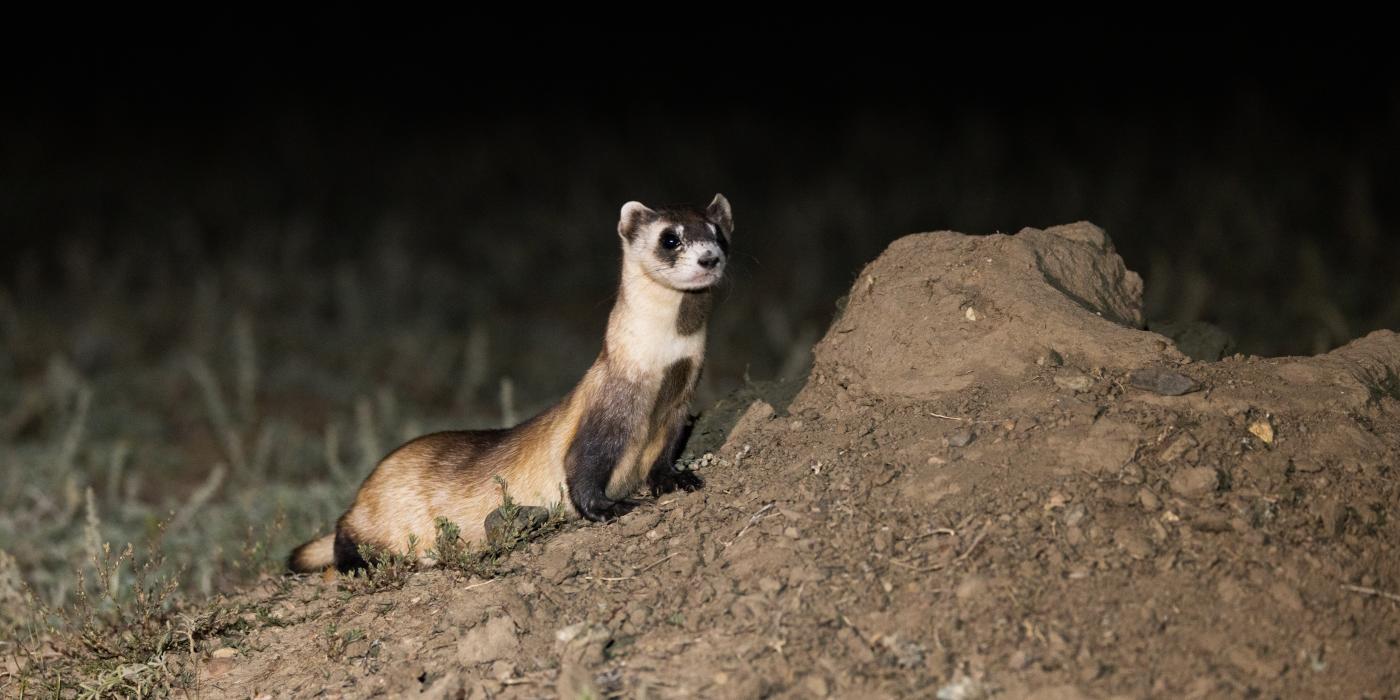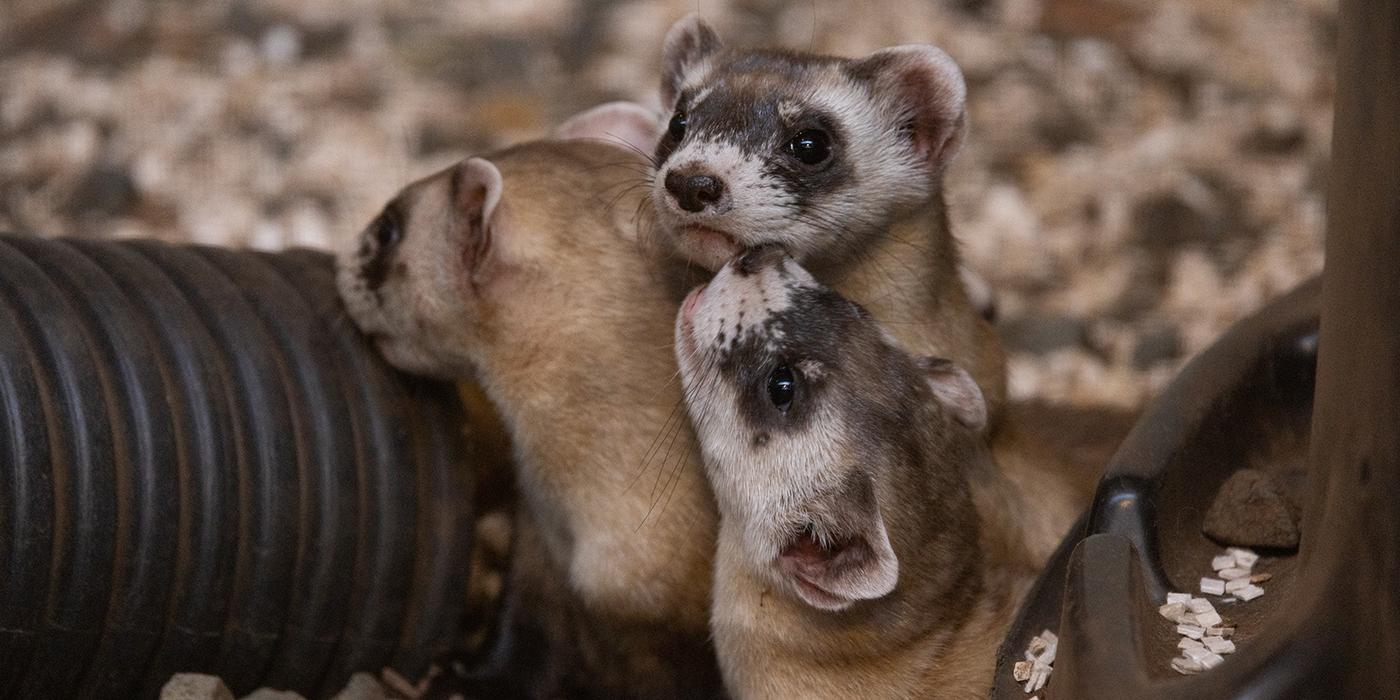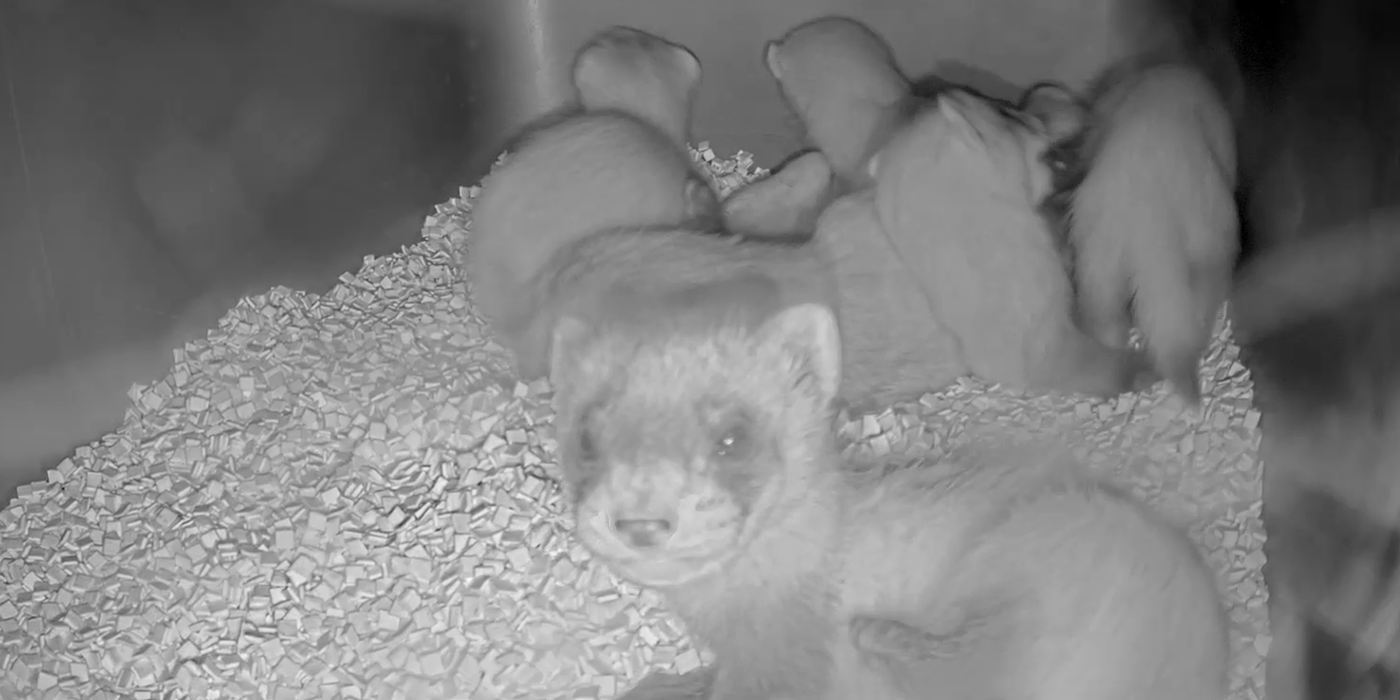Play, Hunt, Sleep, Repeat: A New View on the Ferret Kits
For the first time ever, Potpie and her kits’ full enclosure area outside the den is now watchable from a new, second Black-Footed Ferret Webcam! Since our last update, the kits have become more active and playful. They are now big enough make short adventures around the larger enclosure.
We also flipped the den cam, so viewers may catch Potpie and the kits coming and going. Black-footed ferrets, like many carnivores, learn hunting skills from their mothers when they are young. Chasing, wrestling and other “rough house” play are all forms of practice.
The full area includes enrichment, like landscape drainage pipes — or “tubes” — and overturned flowerpots. The tubes act as tunnels, mimicking the prairie dog tunnels wild black-footed ferrets use to live, hunt and raise young in. All our adult black-footed ferrets have items like these to hide and play in. We’re so excited the kits are now big enough to use and navigate them on their own.
The kits are also ready to get their first live rat! In the wild, black-footed ferrets primary food source are prairie dogs. The kits that are released into the wild will need to know how to hunt them. As a form of enrichment for adults with kits and to help start the potential preconditioning process for the kits, we provide a live rat at least once a week.
At this stage, Potpie is the primary hunter of the live rat. The kits may observe her, but their involvement in the hunt is more gradual over the next month or so. The hunt itself is very quick. Black-footed ferrets hunt prairie dogs in a similar fashion in the wild, in burrows. Webcam viewers are most likely to see the dead rat on the den cam than any of the hunt itself on the new cam.
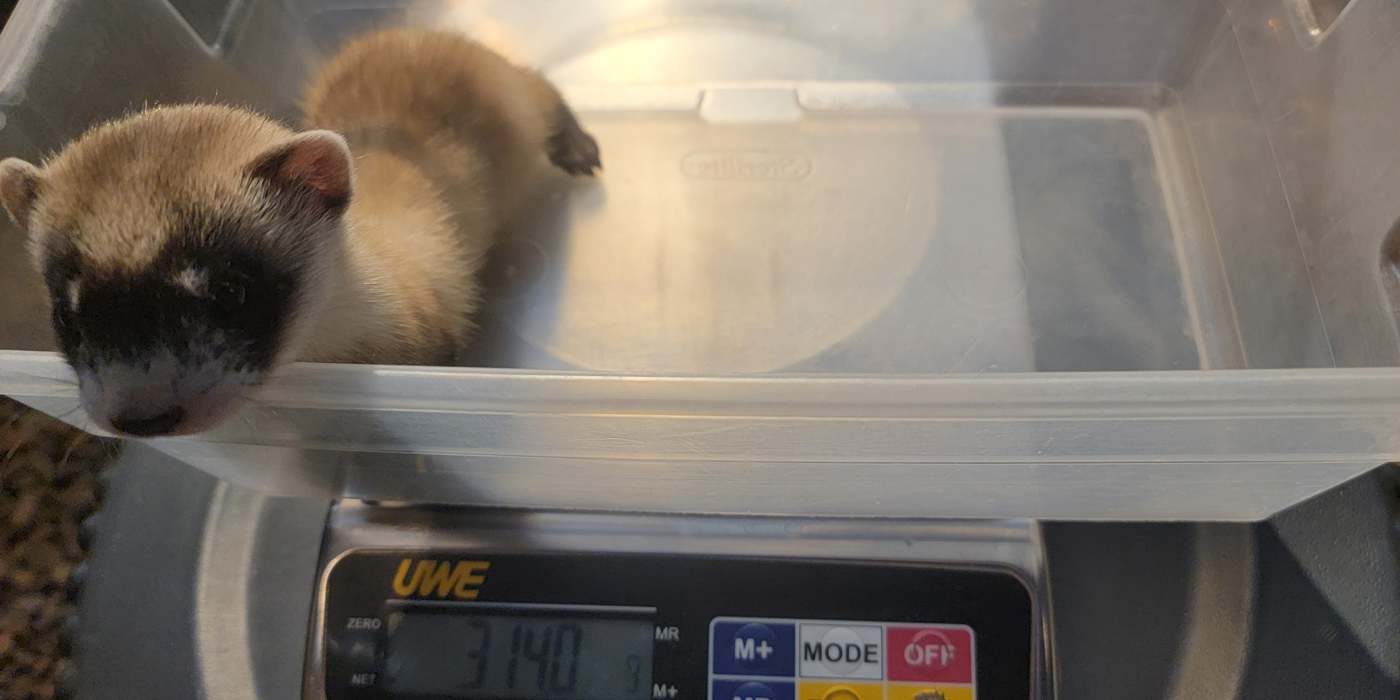
While this age is exciting because the kits are so active, it is also the point where weighing them becomes a little tougher. At their most recent weigh in, all three weighed more than double what they did at around one month old. The males weighed 386 grams and 382 grams, while the female tipped the scales at 403.5 grams – roughly the same weight as a 12 ounce can of soda.
If you’re hoping to catch the kits playing and hiding outside the den, keep in mind black-footed ferrets are nocturnal and are more likely to be active at night.
Seeking more on this ferret family? Stay tuned for updates on the kits and follow the journey on the Zoo’s Facebook, Instagram and Twitter.
Related Species:

